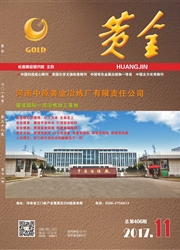

 中文摘要:
中文摘要:
高含泥氧化矿石浸堆因渗透性差而影响堆浸的正常进行。渗透试验表明,高含泥氧化矿石矿堆的渗透性与矿石粒级组成密切相关,采取矿石堆浸粒级划分:-1 mm为泥质物,+5 mm为块状矿,5~1 mm之间为粉状矿。在此基础上,提出了分粒级筑堆技术,即先对矿石进行分级,然后按粒级分区筑堆,对不同粒级浸堆采用不同的布液强度。该项技术应用在云南某铜矿,消除了原堆浸生产中浸堆表面的径流与积液现象,产出铜离子浓度达到萃取要求的合格浸出液,铜浸出率达到了63.98%,使堆浸—萃取—电积生产恢复正常。
 英文摘要:
英文摘要:
The poor permeability of copper oxide ore with high-clay affects the effects of heap leaching.The infiltration experiments show that the permeability of ore is closely related to its particle size composition,which indicates that the classification boundary of argillaceous matter should be 0-1mm,the boundary of massive ore should be larger than 5 mm,while the intermediate is powder ore.On this basis,the classification heap-constructing technology is proposed,which is to construct different heaps according to the classification of ore particle sizes and to distribute different solution intensity in different heaps.The technology has been applied in a copper mine in Yunnan province and has eliminated the surface fluid runoff and accumulation phenomena.Qualified leaching solution can be produced and the leaching rate of copper reaches 63.98 %.The new technology saves the leaching-extraction-electrowinning production line.
 同期刊论文项目
同期刊论文项目
 同项目期刊论文
同项目期刊论文
 Investigation on the threshold control of safety blasting vibration velocity for the extraction of c
Investigation on the threshold control of safety blasting vibration velocity for the extraction of c The effect of solid components on the rheological and mechanical properties of cemented paste backfi
The effect of solid components on the rheological and mechanical properties of cemented paste backfi Leptospirillum forms a minor portion of the population in Zijinshan commercial non-aeration copper b
Leptospirillum forms a minor portion of the population in Zijinshan commercial non-aeration copper b Comparison of the electrochemical mechanism of chalcopyrite dissolution in the absence or presence o
Comparison of the electrochemical mechanism of chalcopyrite dissolution in the absence or presence o Visualization of flow behavior during bioleaching of waste rock dumps under saturated and unsaturate
Visualization of flow behavior during bioleaching of waste rock dumps under saturated and unsaturate 期刊信息
期刊信息
